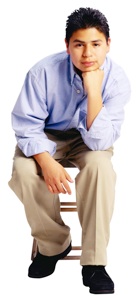Section Two
Playing it Safe
Alcohol & Alcohol Safety

Before drinking, think about its possible consequences (e.g., academic and health problems, unsafe sex, assault, injury, and even death). These consequences affect the person who drinks as well as other students (whether they choose to drink or not) and the community as a whole. See “Effects of Alcohol in Your Blood” below.
Effects of Alcohol in Your Blood
Alcohol is a central nervous system depressant. How drinking affects your body and mind depends upon your blood alcohol concentration (BAC). BAC is related to how much alcohol you drink in a given period of time and your body weight.
| % of Blood Alcohol Concentration (BAC) | |||||
|---|---|---|---|---|---|
| Number of Drinks in Two Hours* | |||||
| Body Weight | 2 | 4 | 6 | 7 | 10 |
| 120 lbs. | 0.06 | 0.12 | 0.19 | 0.25 | 0.31 |
| 140 lbs. | 0.05 | 0.11 | 0.16 | 0.21 | 0.27 |
| 160 lbs. | 0.05 | 0.09 | 0.14 | 0.19 | 0.23 |
| 180 lbs. | 0.04 | 0.08 | 0.13 | 0.17 | 0.21 |
| 200 lbs. | 0.04 | 0.08 | 0.11 | 0.15 | 0.19 |
| BAC | Effects |
|---|---|
| 0.05% | Relaxed state. Judgement is not as sharp. Release of tension; carefree feeling. |
| 0.08%** | Inhibitions are lessened. |
| 0.10% | Movements and speech are clumsy. |
| 0.20% | Very drunk. Can be hard to understand. Emotions can be unstable. 100 times greater risk for traffic accident. |
| 0.40% | Deep sleep. Hard to wake up. Note able to make voluntary actions. |
| 0.50% | Can result in coma and/or death. |
| * 1 drink equals 1½ ounces of 80-proof hard liquor, 12 ounces of beer or 5 ounces of wine. | |
| ** All states use 0.08 as the lowest indicator of driving while intoxicated. | |
Alcohol Poisoning
Call 9-1-1 for one or more of the following signs of alcohol poisoning or combining alcohol and other drugs, such as sedatives or tranquilizers. Act quickly. Alcohol poisoning can be fatal.
- Unconsciousness. This means the person is hard to rouse and can’t be made aware of his or her surroundings. This can be brief, such as with fainting or blacking out. It can put a person into a coma.
- No breathing or slow and shallow breathing. This means 10 or fewer breaths per minute or time lapses of more than 8 seconds between breaths.
- Slow pulse rate (40 or fewer beats per minute).
- Skin that is cold, clammy, and/or pale or blue in color.
{Note: Before emergency care arrives, place the person on his or her side with the knees bent, to prevent choking if he or she vomits. Loosen the person’s clothing around the neck and check the mouth and back of the throat to see that nothing obstructs the person’s breathing. Stay with the person.}
Alcohol Safety Tips
- Choose substance-free housing, if available and desired.
- Be aware and think about the risks and consequences of drinking, including getting arrested, getting sick, contracting an STI, etc. One incident of alcohol use could cause you to do something you will regret for the rest of your life. Alcohol plays a part in most sexual assaults.
- Mixing drinking with driving, drugs, or operating machines can be fatal. Designate a sober driver.
- Not everyone drinks. Be with people who drink non-alcoholic beverages or ones that look like “drinks,” such as non-alcoholic beer in a glass.
- It is better to get medical help for a person who needs it instead of worrying about getting a friend in trouble.
- Drink alcohol only if you want to, and if you do:
- Know your limit and stick to it or don’t drink any alcohol.
- Drink slowly. You are apt to drink less. Have one drink during a party. Take fake sips, if necessary. In reality, anything over two drinks does not increase the feeling of pleasure. Drinking too much leads to being unable to enjoy yourself.
- Eat when you drink. Food helps to slow alcohol absorption.
- Alternate an alcoholic beverage with a non-alcoholic one. Use non-alcohol or reduced alcohol beverages. Dilute distilled beverages. Use more and more mixer and less and less alcohol. After two drinks, your taste buds are dulled and you won’t be able to notice much difference.
- Avoid drinking contests and games.
For more information, contact:
Emergency Medical Service (Call 9-1-1) if you suspect alcohol poisoning or a drug overdose.
Your school’s Student Health Service, Student Counseling Service, or Alcohol and other Drug Program.
Alcohol and Drug Abuse Helpline | 800.ALCOHOL (252.6465) | www.adcare.com
Al-Anon Family Group Headquarters (includes Alateen) | 888.4AL.ANON (425.2666) | www.al-anon.org
Alcoholics Anonymous (AA) | www.aa.org
Center for Substance Abuse Treatment National Drug Treatment Referral Routing Service | 800.662.HELP (4357)
Facts on Tap Web site | www.factsontap.org
Narcotics Anonymous (NA) | 818.773.9999 | www.na.org
National Institute on Alcohol Abuse & Alcoholism (NIAAA) | www.nih.gov | www.thecoolspot.gov